After months away, the blue whale skeleton has returned to the Museum. How did conservators get the enormous skull through the Victorian doors?
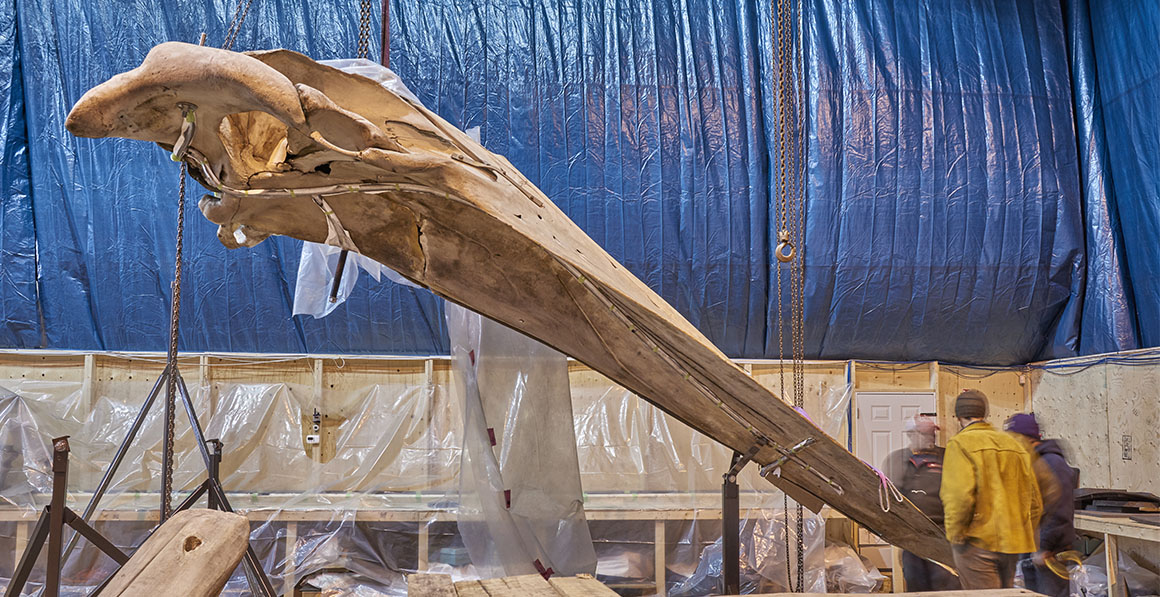
The whale skull being worked on in an off-site warehouse
For months, the Museum's 25-metre blue whale skeleton has been in an off-site warehouse - the only place large enough for expert teams to work on it.
Engineers spent months crafting a bespoke metal mount by hand, ready for the skeleton to be installed in its new home in our central space, Hintze Hall.
Conservators were ready to begin hanging the skeleton from the ceiling in spring 2017.
But before they could start, they faced a huge challenge: how do you get the skull of the largest animal in the world through the door of a Victorian building?
Answer: you take the doors off.
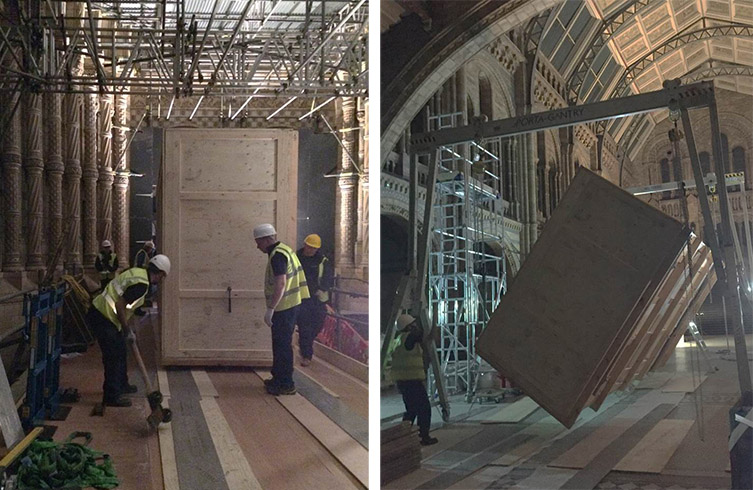
The crate containing the skull is wheeled towards the doors of Hintze Hall from the outside (left). Once inside, it is gently rotated back to a horizontal position (right).
A tight squeeze
A large team oversaw the arrival of the skull back at the Museum, including Head of Conservation Lorraine Cornishopens in a new window.
She says, 'The biggest challenge was getting the six-metre skull through the front doors.
'After meticulous planning and measuring, we knew that there would be only a few centimetres to spare. The front doors would need to be removed.'
The skull in its crate was rotated onto its side using a crane. The crate was then carefully hoisted onto a scaffolding platform built over the front steps of the Museum.
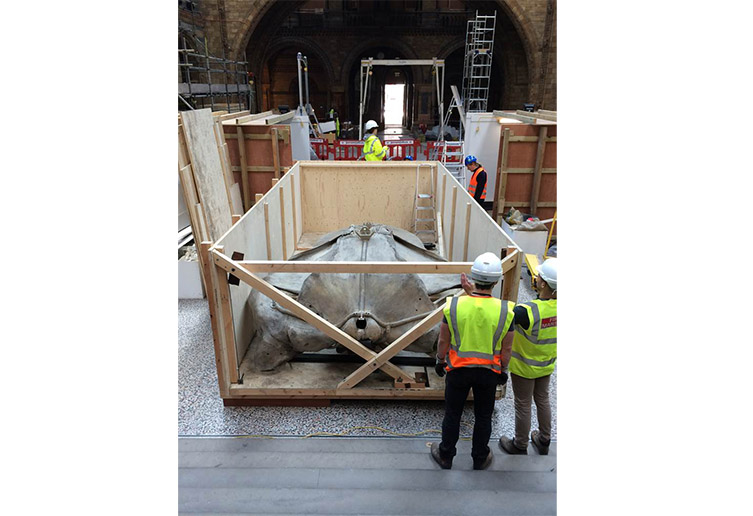
The whale skull safely inside Hintze Hall
Lorraine says, 'The crate was slowly wheeled along the platform towards the front entrance. Then we gently pushed and pulled it through the gap.
'When it was successfully in Hintze Hall the crate was turned back to a horizontal position.
'The whole process took several hours, running into the early hours of the following morning.Everyone breathed a collective sigh of relief once it was safely delivered.'
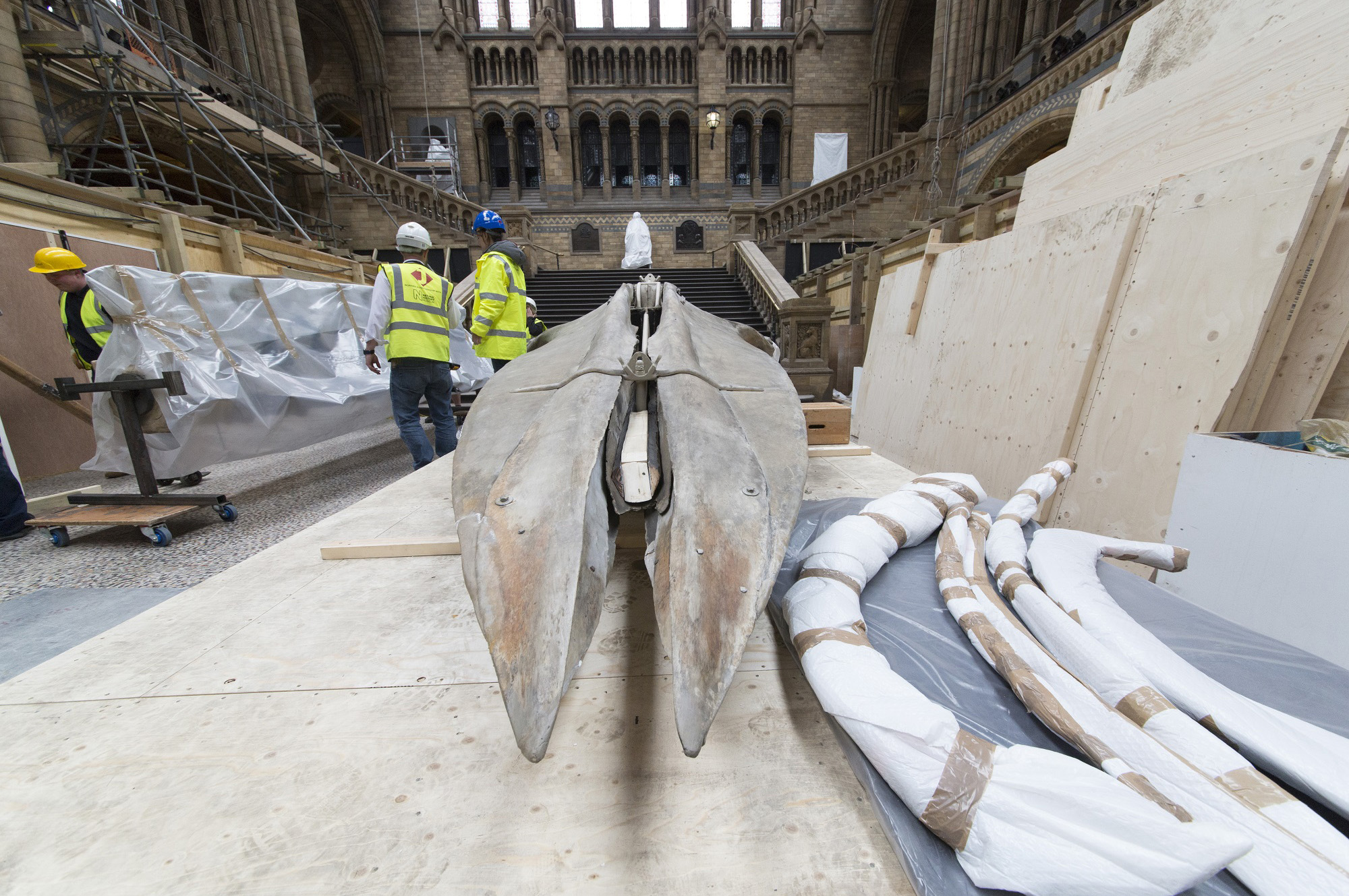
The whale skeleton being moved to the floor of Hintze Hall
The skull is now undergoing some final conservation work before it is re-attached to the rest of the skeleton, which was delivered to the Museum separately.
See the whale
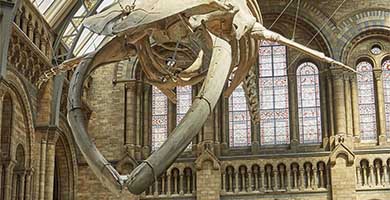
See the blue whale
Visit the Museum and walk beneath the largest animal ever to have lived.
Watch the whale deinstallation
The blue whale skeleton previously hung in the Mammals Hall. Watch as the first bones are taken down.

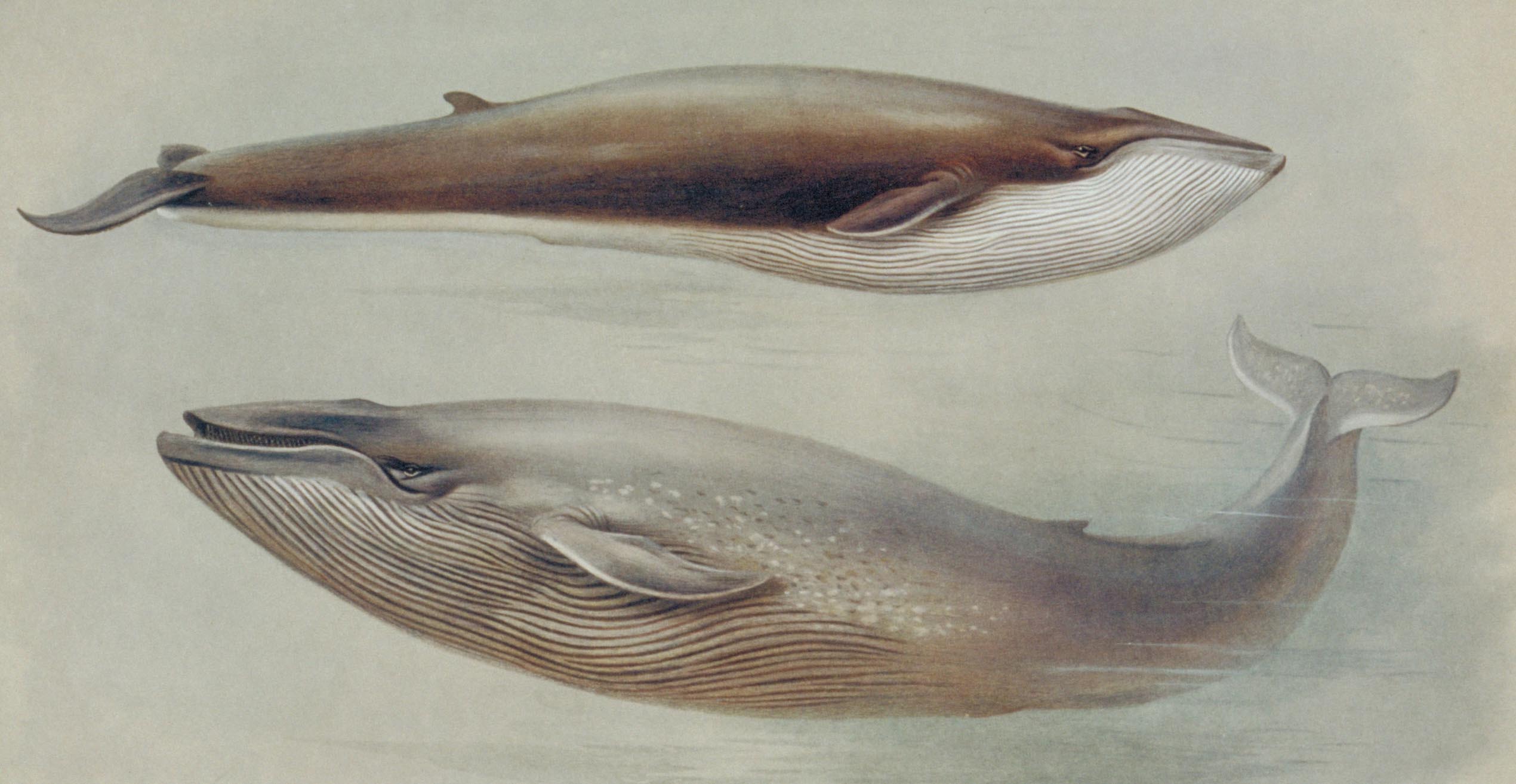
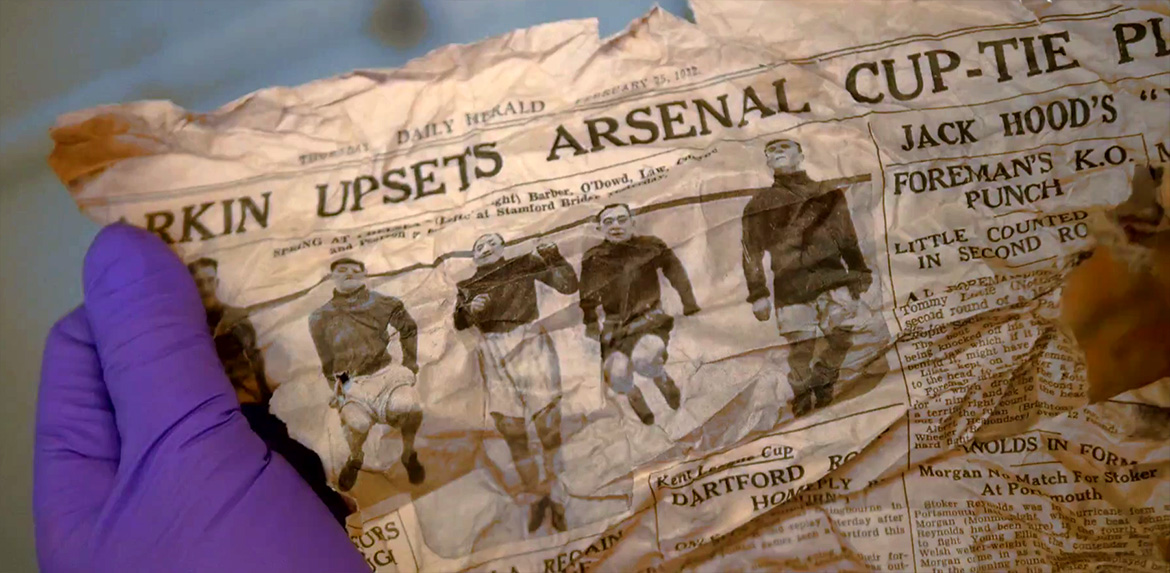
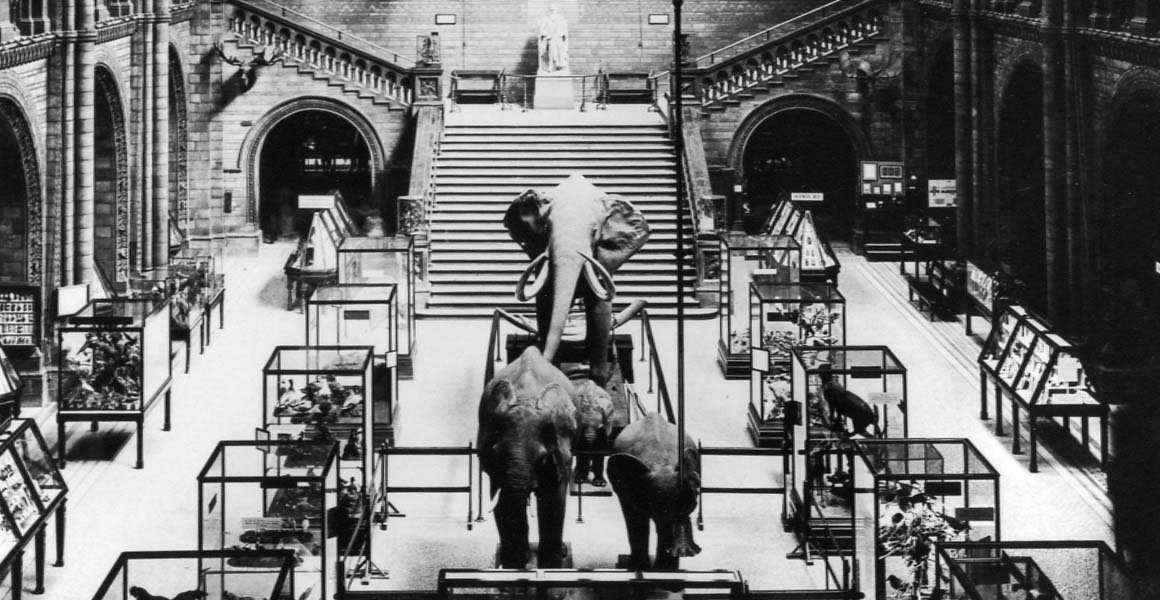
Don't miss a thing
Receive email updates about our news, science, exhibitions, events, products, services and fundraising activities. We may occasionally include third-party content from our corporate partners and other museums. We will not share your personal details with these third parties. You must be over the age of 13. Privacy notice.
Follow us on social media